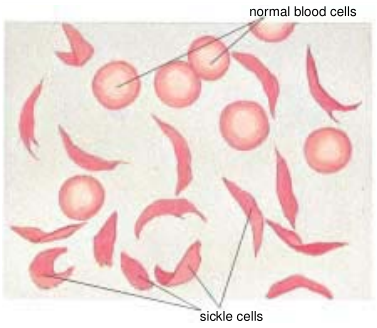- 签证留学 |
- 笔译 |
- 口译
- 求职 |
- 日/韩语 |
- 德语
Anemia is defined as a decrease in the amount of hemoglobin in the blood. Anemia may result from too few red blood cells, cells that are too small, or too little hemoglobin in the cells. Cells may be normal in size (normocytic) or abnormal (microcytic or macrocytic), and they may be normal in hemoglobin (normochromic) or have too little (hypochromic). Key tests in diagnosing anemia are blood counts, mean corpuscular volume (MCV), and mean corpuscular hemoglobin concentration (MCHC). The general symptoms of anemia include fatigue, shortness of breath, heart palpitations, pallor, and irritability. There are many different types of anemia, some of which are caused by underproduction of red cells, others by loss or destruction of cells.
Aplastic anemia results from destruction of the bone marrow and affects all blood cells (pancytopenia). It may be caused by drugs, toxins, viruses, radiation, or bone marrow cancer. Aplastic anemia has a high mortality rate but has been treated successfully with bone marrow transplantation.
Nutritional anemia may result from a deficiency of vitamin B12, folic acid (a B vitamin), or most commonly, iron. A specific form of B12 deficiency is pernicious anemia. This results from the lack of a substance produced in the stomach, intrinsic factor (IF), which aids in the absorption of this vitamin from the intestine. Pernicious anemia must be treated with regular injections of B12. Folic acid deficiency commonly appears in those with poor diet, in pregnant and lactating women, and in those who abuse alcohol. Iron-deficiency anemia result from poor diet, poor absorption of iron, and blood loss. Both folic acid deficiency and iron deficiency respond to dietary supplementation.
In sideroblastic anemia, there is adequate iron available, but the iron is not used properly to manufacture hemoglobin. This disorder may be hereditary or acquired, as by exposure to toxins or drugs, or as secondary to another disease. The excess iron precipitates out in immature red cells (normoblasts).
Hemorrhagic anemia results from blood loss. This may be a sudden loss, as from injury, or loss from chronic internal bleeding, as from the digestive tract in cases of ulcers or cancer.
Several hereditary diseases cause hemolysis (rupture) of red cells, resulting in anemia. Thalassemia appears in Mediterranean populations. It affects the production of hemoglobin and is designated as α (alpha) or β (beta), according to the part of the molecule affected. Severe β thalassemia is also called Cooley anemia. In sickle cell anemia, a mutation alters the hemoglobin molecule so that it precipitates when it gives up oxygen and distorts the red blood cells into a crescent shape (Fig.1). The altered cells block small blood vessels and deprive tissues of oxygen, an episode termed sickle cell crisis. The misshapen cells are also readily destroyed (hemolyzed). The disease predominates in black populations. Genetic carriers of the defect, those with one normal and one abnormal gene, show sickle cell trait. They usually have no symptoms, except when oxygen is low, such as at high altitudes. They can, however, pass the defective gene to offspring. Sickle cell anemia, as well as many other genetic diseases, can be diagnosed in carriers and in the fetus before birth.

FIGURE 1. Sickling of red blood cells in sickle cell anemia. (Reprinted with permission from Cohen BJ, Wood DL. Memmler’s The Human Body in Health and Disease. 9th Ed. Philadelphia: Lippincott Williams & Wilkins, 2000.)
Reticulocyte counts are useful in diagnosing the causes of anemia. Reticulocytes are immature red blood cells that normally appear in a small percentage in the blood. An increase in the number of reticulocytes indicates increased red blood cell formation, as in response to hemorrhage or destruction of red cells. A decrease indicates a failure in red blood cell production, as caused by nutritional deficiency or aplastic anemia.
责任编辑:admin
